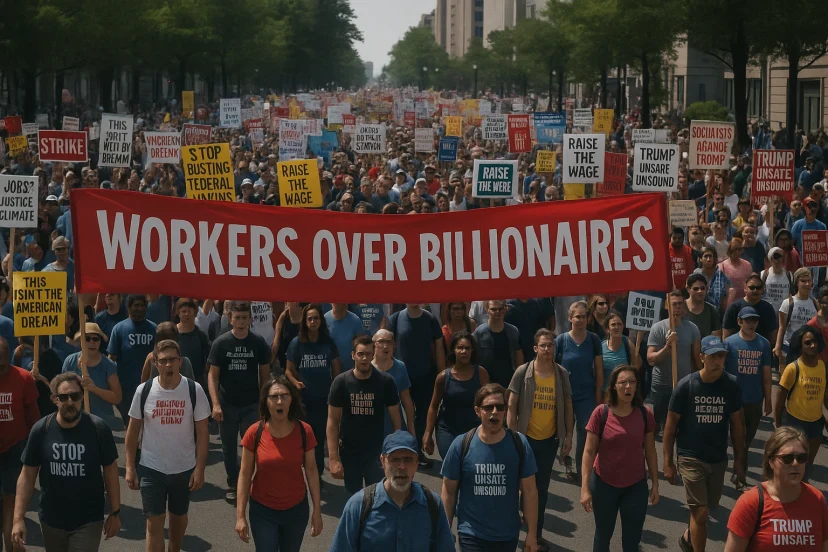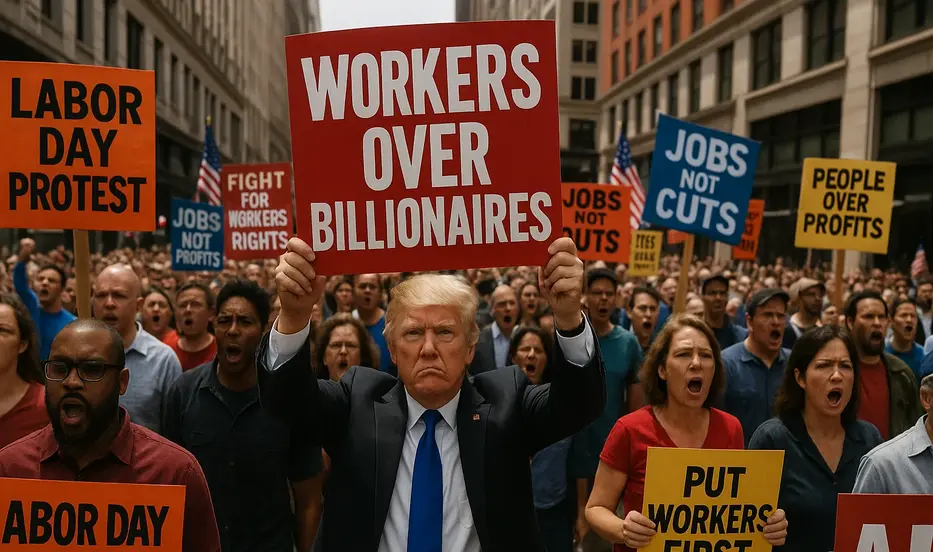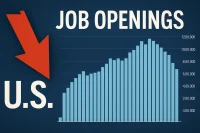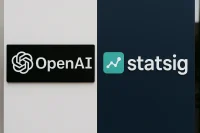The Day protests Trump administration policies have ignited a massive nationwide movement that has fundamentally reshaped the American landscape. As thousands of workers across the country took to the streets under the banner “Workers Over Billionaires,” the demonstrations revealed deep-seated frustrations with policies that have stripped federal union rights, resulted in massive job losses, and maintained a stagnant minimum wage that hasn’t increased since 2009. The Day protests Trump administration response has exposed a growing divide between working Americans and policies that many believe favor the wealthy elite over everyday workers.

The Scale of Nationwide Demonstrations
The Day protests Trump administration policies reached unprecedented scale, with demonstrations taking place across roughly 1,000 different locations throughout the United States. Organized by the AFL-CIO and various community groups, these protests represented one of the largest coordinated actions in recent American history. The sheer geographic spread of the demonstrations, from major metropolitan areas to smaller communities, demonstrated the widespread impact of the Trump administration’s policies on workers across all sectors of the economy.
The protests were not limited to traditional union strongholds but extended into communities that have historically been less engaged. This broad participation indicates that the Day protests Trump administration policies have resonated with a diverse range of workers who feel their economic security and workplace rights are under threat. The movement has successfully united workers from different industries, backgrounds, and political affiliations around common concerns about economic inequality and rights.
The AFL-CIO’s Strategic Leadership
The AFL-CIO’s leadership in organizing the Day protests Trump administration policies represents a significant strategic shift in American organizing. By coordinating demonstrations across such a vast geographic area, the federation has demonstrated its ability to mobilize workers on a national scale and respond to policies that threaten the fundamental rights of American workers. The “Workers Over Billionaires” messaging has proven particularly effective in framing the debate around economic inequality and the concentration of wealth among the nation’s elite.
The federation’s approach to the Day protests Trump administration policies has also highlighted the interconnected nature of various issues, from collective bargaining rights to minimum wage increases to workplace safety protections. This comprehensive approach has helped workers understand how seemingly disparate policies all contribute to a broader pattern of economic disenfranchisement and workplace vulnerability.
The Devastating Impact on Manufacturing Jobs
One of the most striking revelations from the Day protests Trump administration policies was the devastating impact on American manufacturing employment. Protest organizers revealed that the administration’s reckless tariff policies have resulted in 37,000 fewer manufacturing jobs in the economy, with more American workers getting laid off last month than any month since the start of the pandemic. These statistics paint a grim picture of the economic consequences of trade policies that were ostensibly designed to protect American industry.
The manufacturing job losses highlighted during the Day protests Trump administration policies represent more than just numbers on a spreadsheet. Each lost job represents a family facing economic uncertainty, a community losing its economic foundation, and a worker forced to navigate an increasingly challenging job market. The concentration of these losses in manufacturing sectors that have traditionally provided stable, well-paying employment has created ripple effects throughout local economies across the country.
Help Rebuild America’s Workforce
Manufacturing communities are being hit hardest by job losses. Post your job on WhatJobs and connect with skilled workers ready to get back to work and strengthen local economies.
Post a Job Now →The Human Cost of Economic Policies
The Day protests Trump administration policies have brought to light the human stories behind the economic statistics. Workers who have lost their jobs due to tariff-related disruptions have found themselves competing for fewer available positions, often at lower wages and with reduced benefits. This has created a downward pressure on wages and working conditions that affects not only displaced manufacturing workers but also workers in related industries and services.
The timing of these job losses, occurring during a period of economic recovery from the pandemic, has made the Day protests Trump administration policies particularly poignant. Many workers who had hoped for economic stability and growth following the pandemic’s economic disruptions have instead found themselves facing new challenges and uncertainties. This has created a sense of betrayal among workers who had supported policies they believed would protect American jobs and industries.
Federal Union Rights Under Attack
The Day protests Trump administration policies have also highlighted the systematic dismantling of federal union rights through executive actions. The administration’s recent executive order stripped union workers’ rights for 445,000 federal employees, representing one of the most significant attacks on public sector unions in recent history. This action has sent shockwaves through the federal workforce and has been interpreted as a broader assault on collective bargaining rights across all sectors of the economy.
The executive order targeting federal unions has created a climate of fear and uncertainty among government workers who had previously enjoyed strong protections for their workplace rights. The Day protests Trump administration policies have provided these workers with a platform to voice their concerns and to demonstrate their opposition to policies that undermine their ability to advocate for fair wages, safe working conditions, and reasonable benefits.
The Broader Implications for Labor Rights
The attack on federal union rights highlighted during the Day protests Trump administration policies has broader implications for rights across all sectors of the economy. When the federal government, as the nation’s largest employer, strips workers of their collective bargaining rights, it sends a message to private sector employers that such actions are acceptable and even encouraged. This has created a chilling effect on organizing efforts and has emboldened employers to take more aggressive stances against worker organizing.
The Day protests Trump administration policies have also revealed the interconnected nature of various rights issues. The same administration that has attacked federal union rights has also pursued policies that make it more difficult for workers to organize, negotiate contracts, and advocate for their interests. This comprehensive assault on rights has united workers across different sectors and industries in opposition to policies that threaten their economic security and workplace dignity.
The Stagnant Minimum Wage Crisis
The Day protests Trump administration policies have brought renewed attention to the federal minimum wage crisis, which has remained frozen at $7.25 per hour since 2009. This stagnation represents one of the longest periods without a minimum wage increase in American history, and it has created significant economic hardship for millions of workers who rely on minimum wage jobs to support themselves and their families. The protests have highlighted how this wage stagnation has contributed to growing economic inequality and has made it increasingly difficult for workers to achieve economic security.
The $7.25 minimum wage, when adjusted for inflation, represents a significant decline in purchasing power compared to previous decades. The Day protests Trump administration policies have emphasized how this wage stagnation has forced many workers to work multiple jobs, rely on government assistance, or face economic hardship despite being employed full-time. This has created a situation where work no longer provides a pathway out of poverty for many Americans.
The Economic Impact of Wage Stagnation
The Day protests Trump administration policies have also highlighted the broader economic impact of minimum wage stagnation. When workers earn insufficient wages, they have less money to spend in their local economies, which can lead to reduced economic activity and slower growth. This creates a vicious cycle where low wages contribute to economic stagnation, which in turn makes it more difficult for workers to secure better-paying jobs.
The protests have also emphasized how minimum wage stagnation has contributed to the growing gap between the wealthy and working Americans. While corporate profits and executive compensation have reached record levels, many workers have seen their real wages decline or remain stagnant. The Day protests Trump administration policies have framed this as a fundamental issue of economic justice and have called for policies that ensure all workers can earn a living wage.
Authoritarian Policies and Worker Concerns
The Day protests Trump administration policies have also addressed concerns about authoritarian policies that affect workers, including the deportation of immigrant workers and the deployment of federal forces in American cities. These policies have created a climate of fear and uncertainty among immigrant workers and have raised concerns about the militarization of public spaces and the erosion of civil liberties. The protests have emphasized how these policies not only affect immigrant workers directly but also create a broader climate of intimidation that can suppress worker organizing and advocacy.
The deployment of federal forces in cities like Chicago, which was highlighted during the Day protests Trump administration policies, has raised concerns about the militarization of public spaces and the potential for government overreach in response to peaceful demonstrations. This has created a chilling effect on public protest and has raised questions about the government’s commitment to protecting First Amendment rights and civil liberties.
The Impact on Immigrant Workers
The Day protests Trump administration policies have particularly emphasized the impact of deportation policies on immigrant workers, who play crucial roles in many sectors of the American economy. The removal of immigrant workers has created shortages in key industries such as agriculture, construction, and hospitality, which has had ripple effects throughout the economy. This has highlighted the interconnected nature of immigration policy and market dynamics.
The protests have also emphasized how immigration enforcement policies have created a climate of fear among immigrant workers, making them more vulnerable to exploitation and less likely to report workplace violations or advocate for their rights. This has undermined standards and has made it more difficult for all workers to secure fair wages and working conditions.
Looking to Hire Fast?
Hiring managers can now post jobs for free on WhatJobs and connect with millions of jobseekers.
👉 Post a Job Now →The Future of American Labor
The Day protests Trump administration policies have marked a significant moment in American history, demonstrating the continued relevance and power of organized labor in responding to policies that threaten worker rights and economic security. The widespread participation in these demonstrations has shown that workers across the country are willing to take action to protect their interests and to advocate for policies that promote economic justice and workplace dignity.
The success of the “Workers Over Billionaires” movement has also demonstrated the effectiveness of framing issues in terms of economic inequality and the concentration of wealth among the nation’s elite. This messaging has resonated with workers across different sectors and has helped to build broader support for rights and economic justice initiatives.
Building Momentum for Change
The Day protests Trump administration policies have created momentum for continued activism and organizing around rights and economic justice issues. The demonstrations have shown that workers are not passive victims of economic policies but active participants in shaping the future of work and economic policy in America. This has created new opportunities for organizing and has demonstrated the continued relevance of collective action in addressing workplace and economic issues.
The protests have also highlighted the importance of building coalitions between unions, community groups, and other organizations that share common concerns about economic inequality and worker rights. This collaborative approach has been crucial to the success of the Day protests Trump administration policies and will be essential for continued progress on labor rights and economic justice issues.
Frequently Asked Questions
What sparked the Labor Day protests Trump administration policies?
The Labor Day protests Trump administration policies were sparked by a combination of factors including the stripping of federal union rights for 445,000 employees, 37,000 manufacturing job losses due to tariff policies, and the stagnant federal minimum wage that hasn’t increased since 2009.
How many locations participated in the Labor Day protests Trump administration demonstrations?
The Labor Day protests Trump administration policies took place across roughly 1,000 different locations throughout the United States, making it one of the largest coordinated labor actions in recent American history.
What was the main message of the “Workers Over Billionaires” movement?
The “Workers Over Billionaires” movement emphasized economic inequality and the concentration of wealth among the nation’s elite, calling for policies that prioritize worker rights and economic justice over the interests of billionaires and corporate executives.
How have the Labor Day protests Trump administration policies affected federal workers?
The Labor Day protests Trump administration policies highlighted how an executive order stripped union workers’ rights for 445,000 federal employees, creating fear and uncertainty among government workers and undermining their ability to advocate for fair wages and working conditions.
What impact did the Labor Day protests Trump administration policies have on manufacturing jobs?
The Labor Day protests Trump administration policies revealed that reckless tariff policies have resulted in 37,000 fewer manufacturing jobs, with more American workers getting laid off last month than any month since the start of the pandemic.
Case In Point
Consider Maria, a federal employee who has worked for the Department of Labor for 15 years. Before the Labor Day protests Trump administration policies, she enjoyed strong union protections that ensured fair wages, reasonable working conditions, and job security. However, after the executive order stripped federal union rights, Maria found herself without the collective bargaining protections that had previously safeguarded her employment. She now faces uncertainty about her job security, potential changes to her benefits, and reduced ability to advocate for workplace improvements. Maria joined the Labor Day protests Trump administration demonstrations in Washington D.C., where she stood alongside thousands of other federal workers who shared similar concerns about their future employment security and workplace rights. Her story illustrates how the Labor Day protests Trump administration policies represent real people facing real consequences from policies that threaten their economic security and workplace dignity.




